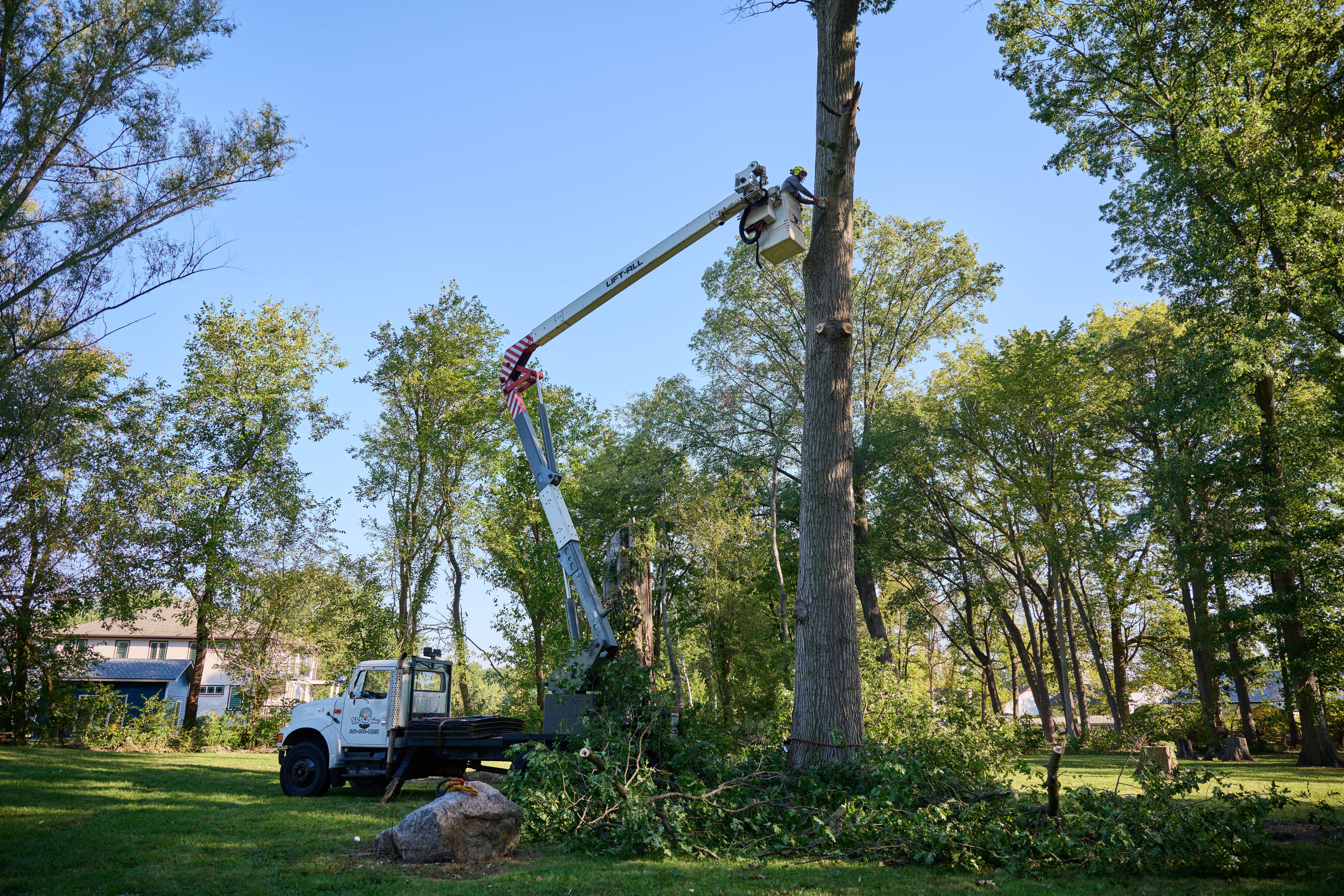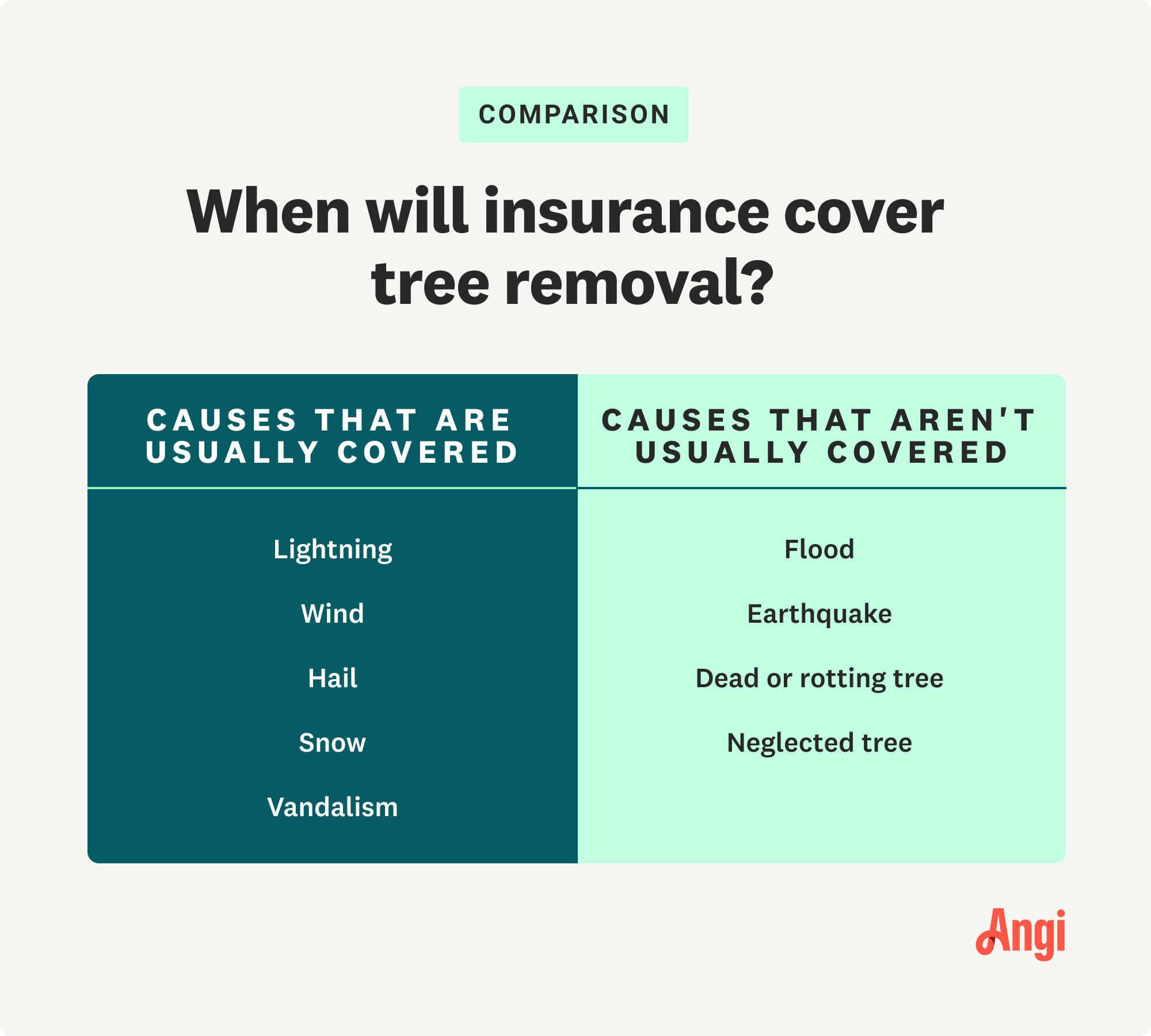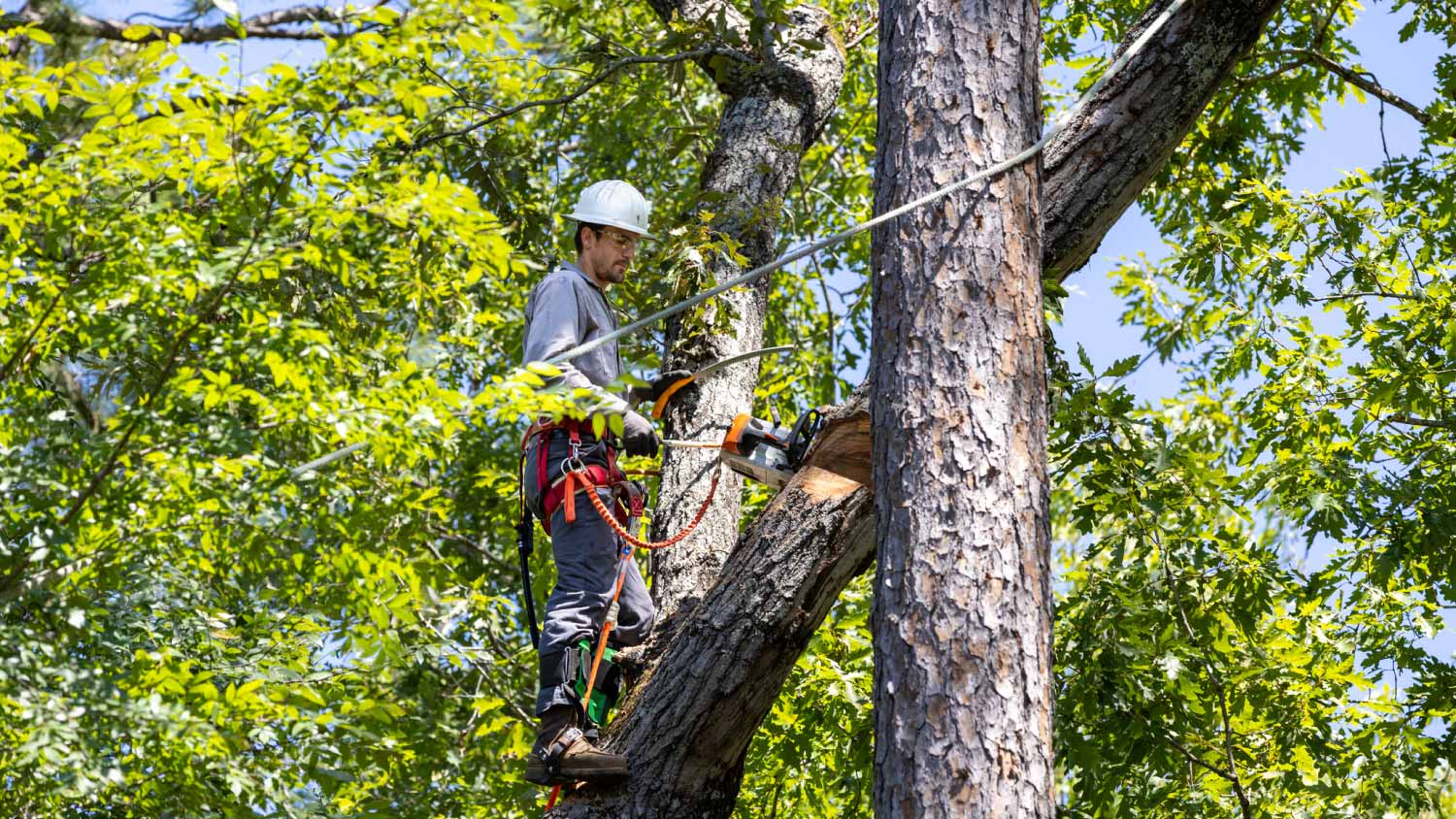
The most significant factor in tree removal costs is the amount of debris. Read on to learn more about the average tree debris removal costs.
Vet a pro before taking out the maple tree growing uncomfortably close to your window


Tree removal services should have both liability insurance and workers’ compensation for the best protection.
Most tree service professionals are happy to provide you with proof of insurance when you ask.
To confirm your contractor is insured, call the insurance company to check.
When you’re considering hiring a tree removal service, it's important to verify that the company carries the proper insurance to cover any onsite accidents or damage. Accidents happen, and when they do, insurance will protect both people and property in the aftermath. Here's how to verify tree service insurance to ensure your tree removal pro is insured.

There are various types of insurance for tree service contractors, but liability insurance and workers’ compensation are arguably the most important ones. The company’s website may indicate whether or not they are insured, but this is not always the case. It’s important to check for this information to avoid potentially costly issues down the line, such as job site injury or damage done during the tree removal.

Liability insurance will come in handy if there are any accidental damages during the tree removal process. It covers both the homeowner and the tree removal professional. Liability insurance offers legal protection if a lawsuit resulting from personal injury or property damage arises.
If the pro you hire has liability insurance, you won’t be on the hook if they make a mistake while working. However, without liability insurance, you’ll be responsible for the repair bills.
Another key type of insurance every tree removal expert should have is workers’ compensation. Like liability insurance, this type of insurance can protect both the homeowner and the contractor working on the homeowner’s property. Workers’ compensation ensures that the contractor or company is responsible if an employee gets injured on the job. Because work-related injuries come with some of the most costly claims, this is a must for any contractor you hire, no matter the size of the company.
When you’re searching for the right tree removal pro, don’t hesitate to ask a lot of questions, especially about insurance and credentials. Here are some questions to ask:
Do you have liability insurance?
Do you have workers’ compensation?
What is the name of your insurance provider?
You can go one step further and request a copy of the insurance certificate. Contractors are often happy to provide this documentation, which is a great thing to have in your files.
Call or email the insurance company to request a copy of the tree removal company’s certificate of insurance. Hold off on signing a contract with the company until you confirm this information. Tree removal work can be hazardous, and insurance protects everyone involved, from the homeowner to the tree removal service and their crew.
A billing statement from the insurance company is not the same as an insurance certificate, and it’s not adequate proof of insurance. While these show insurance coverages, they don’t prove that the contractor actually paid the bill or if it’s up-to-date. If your tree removal pro cannot provide a current insurance certificate, call the insurance company to see if their policy is still in effect.
From average costs to expert advice, get all the answers you need to get your job done.

The most significant factor in tree removal costs is the amount of debris. Read on to learn more about the average tree debris removal costs.

Get a clear estimate of palm tree maintenance cost, including trimming, fertilization, and pest control, so you can keep your palms healthy and your budget on track.

Discover the average tree maintenance cost, key price factors, and tips to save. Get expert insights to plan your tree care budget with confidence.

If you need or want to move a tree to a new spot, it’ll take some effort. Learn how to transplant a tree to move it successfully.

What is an arborist and do they cut down trees? Learn what an arborist is, the services they offer, and when to hire one.

Arborists define Dutch elm disease as one of the most destructive diseases a tree can catch. Here’s what you can do—from spotting symptoms to treatment.